In the group, we built a UHV instrument to investigation of molecular spectroscopy, molecular reaction dynamics, kinetics and mechanisms on simple surfaces at ultra-high vacuum and near-ambient pressure conditions.
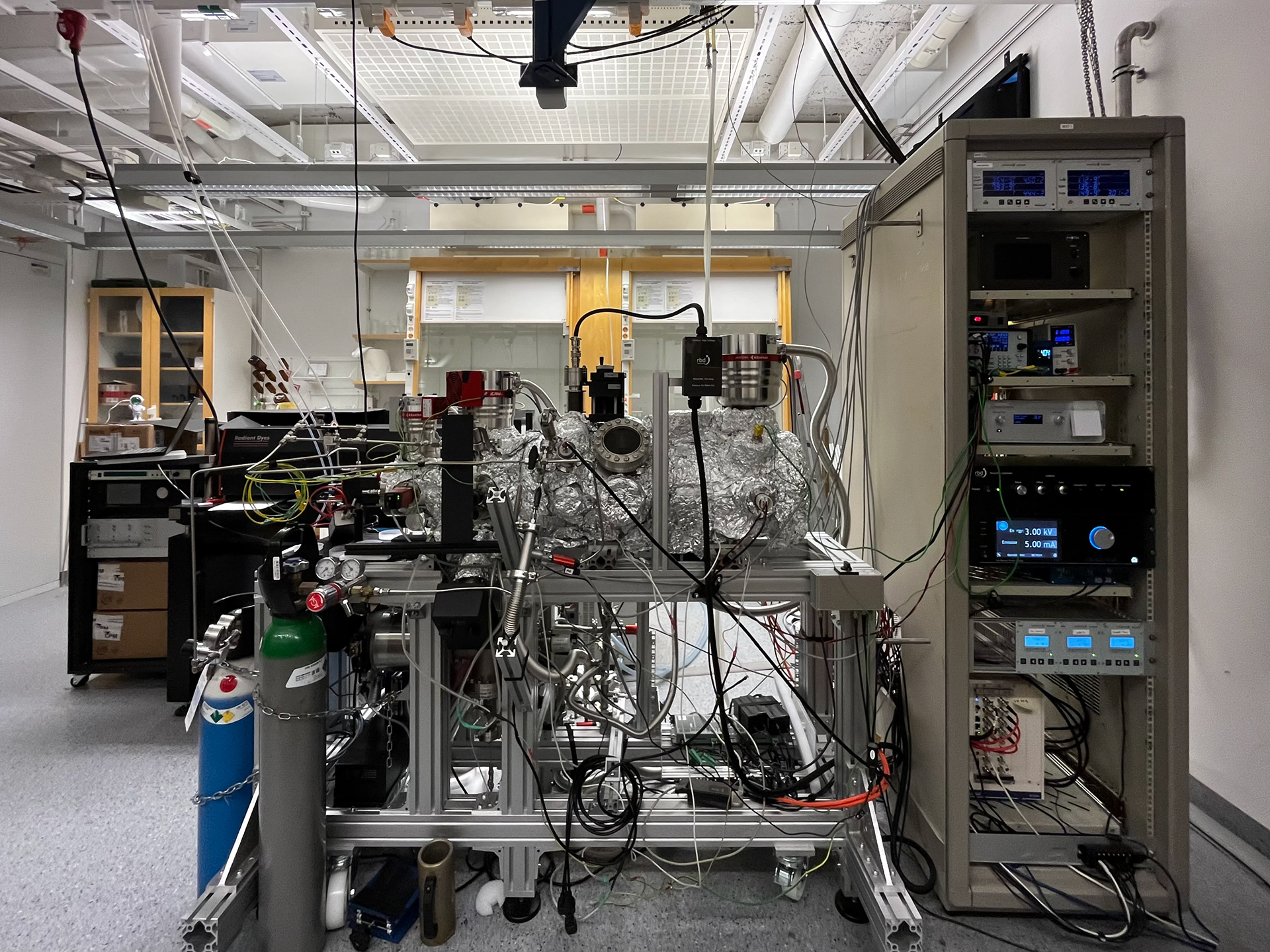


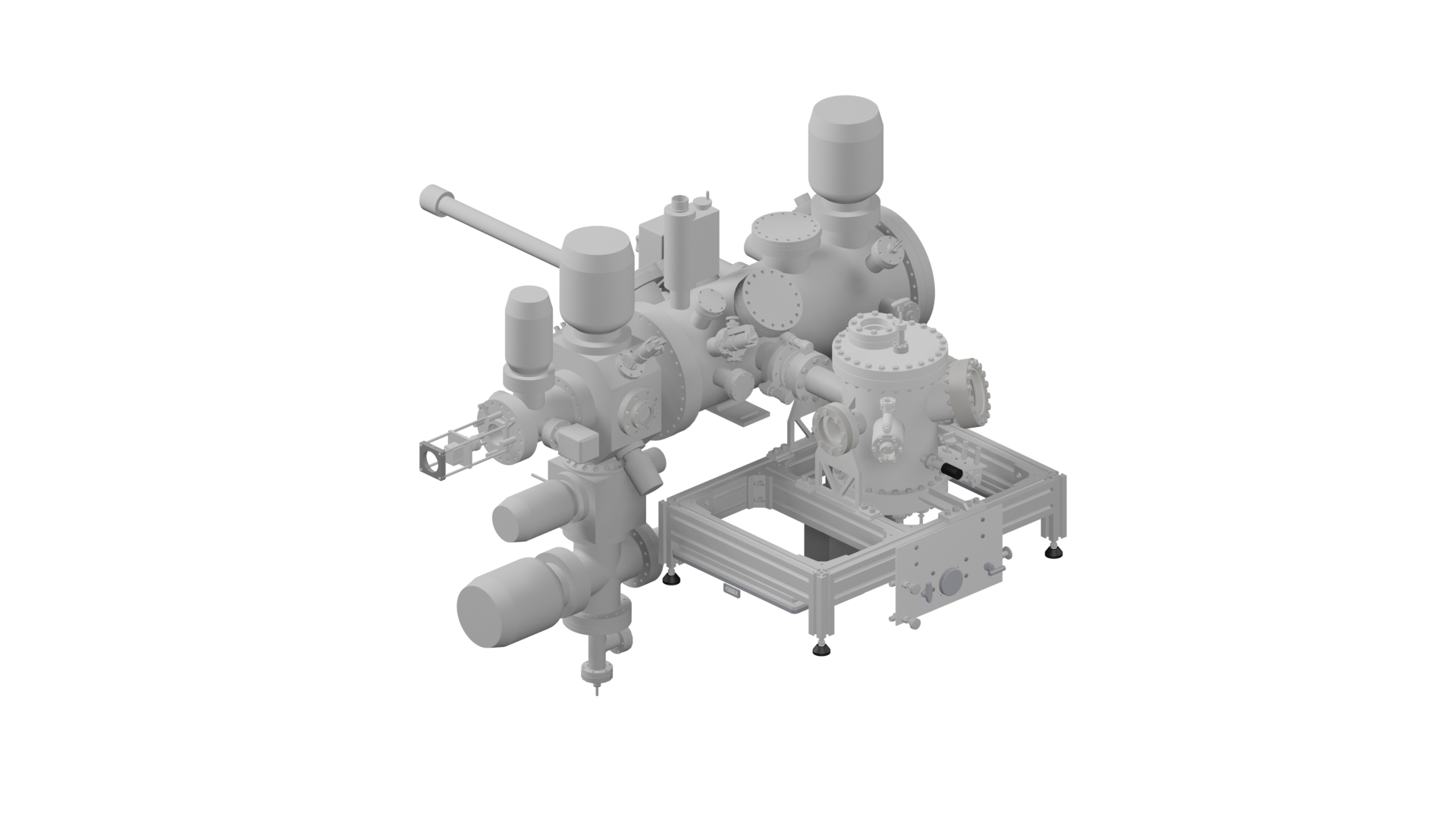
Click icon to follow us on Instagram
The machine we designed is called NAP-VMI which is a surface scattering VMI machine that can work under near-ambient pressure. A VMI is a technique that measures the speed of molecules and projects them onto a 2D sensor, the 2D images tell us the velocity and orientation of molecules.
Design
The machine consists of molecular beam, scattering chamber, VMI detector and sample preparation chamber.
The design of the machine
Construction
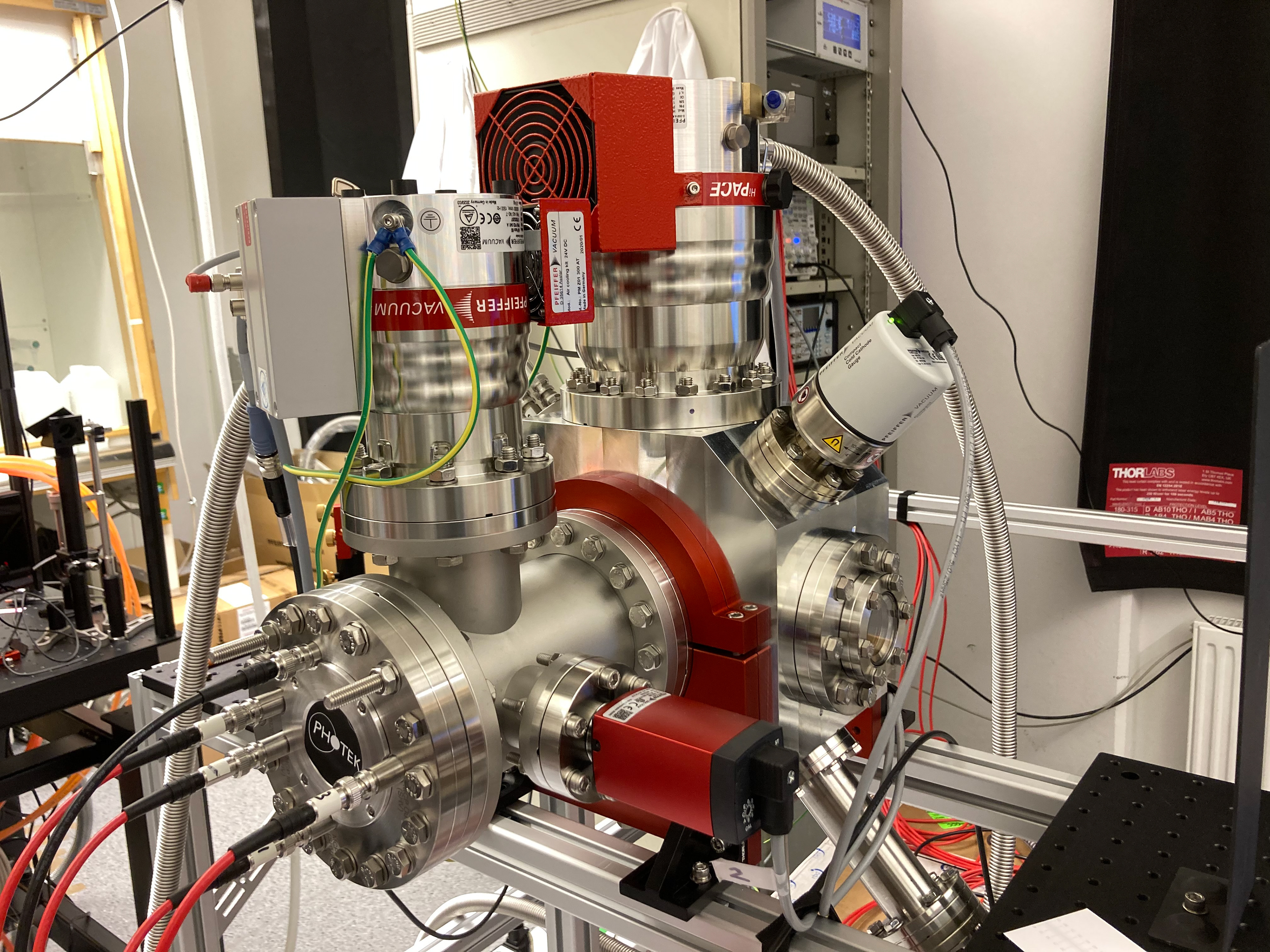
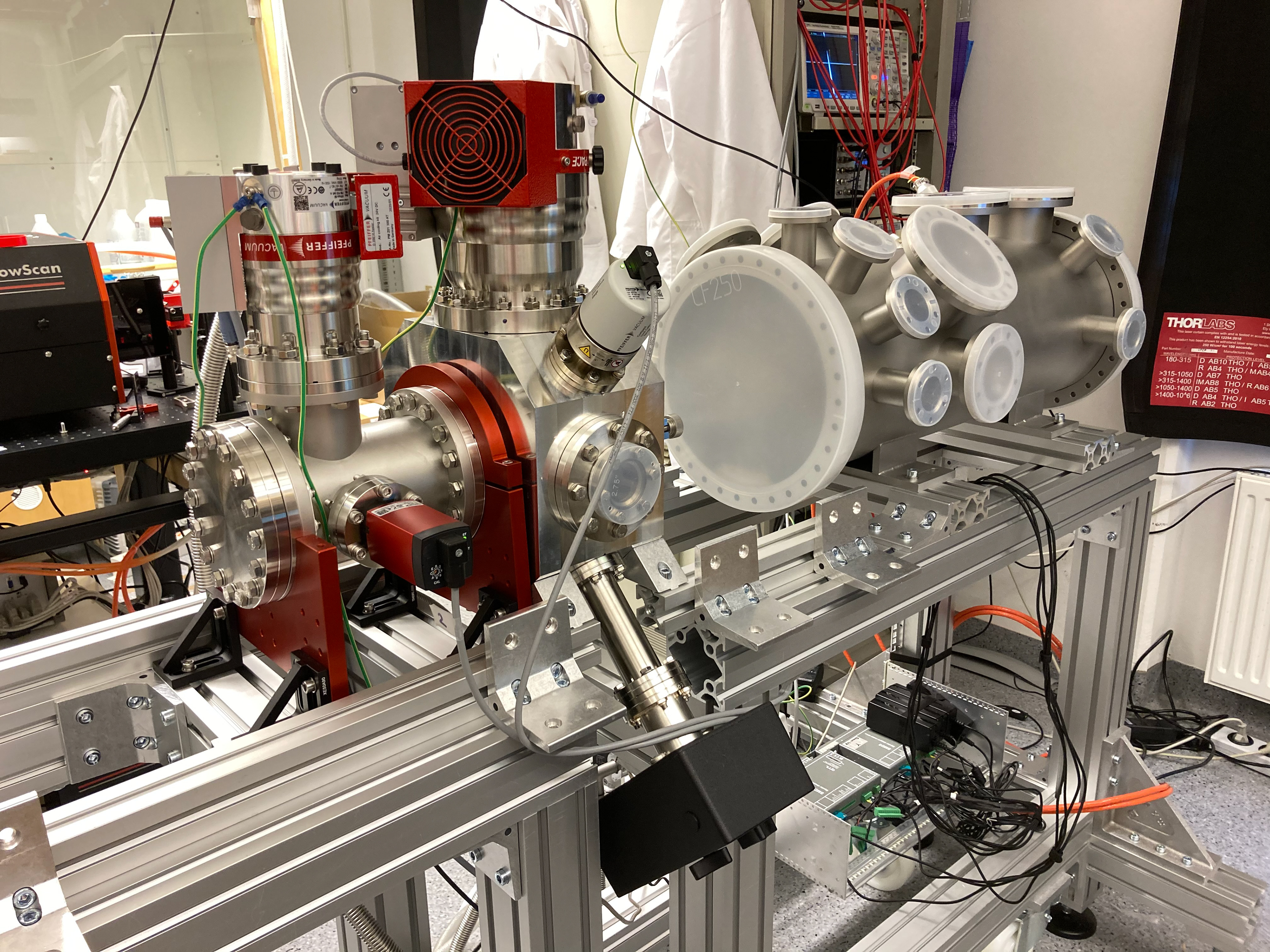
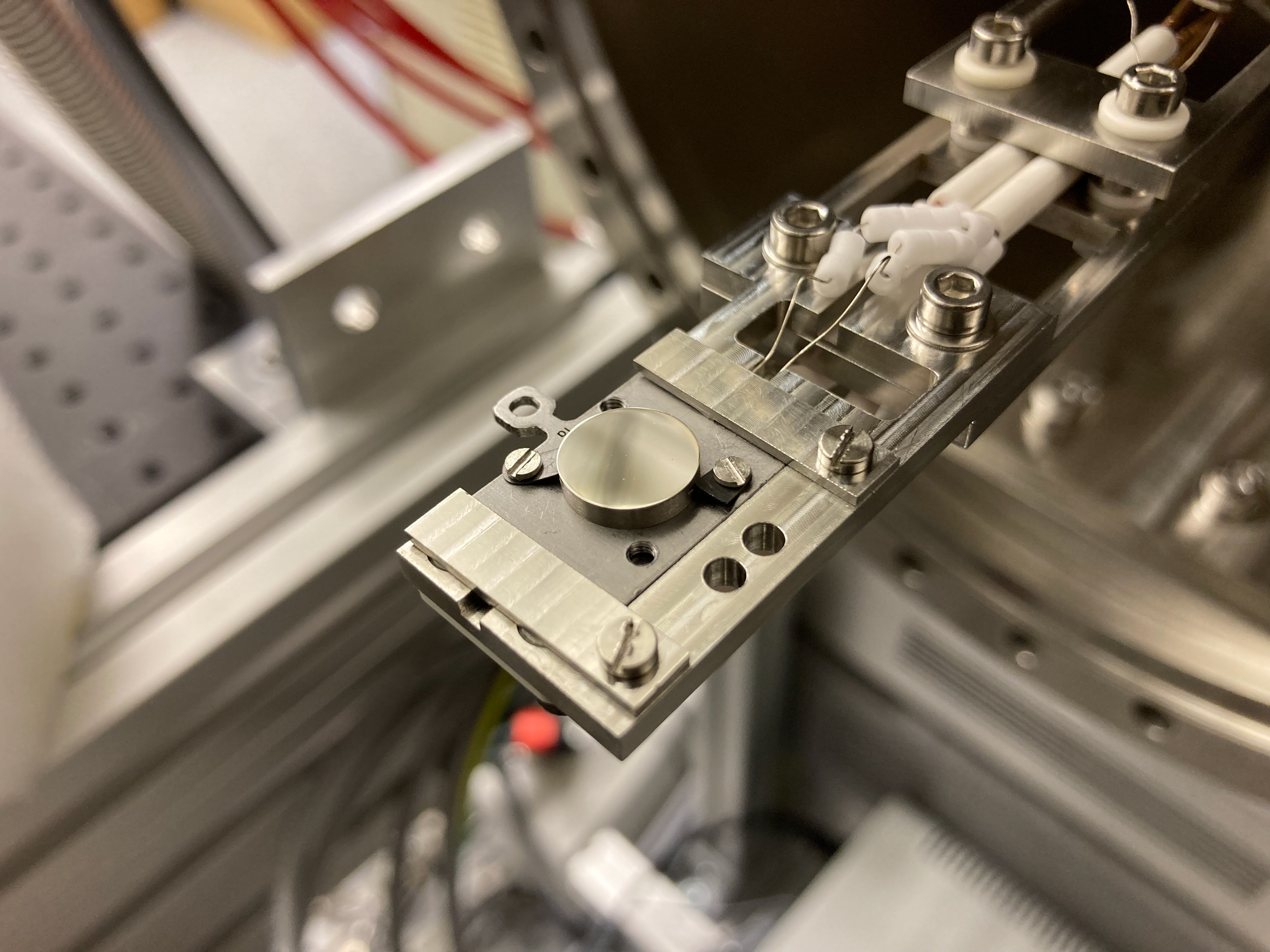
Click image to see more photos
Researchs
N2O photodissociation
We probe the N2 from N2O photodissociation, after dissociation the N2 expand into a spherical cloud, that gives it a very clear and sharp image which is good for speed calibration for NAP-VMI.
We also demonstrated that this VMI machine can work under 1e-3 mbar (near-ambient pressure), that is why we named it NAP-VMI.
N2O photodissociation VMI
N2 scatter form Pd(110)
We are interested in reaction on catalytic surface. Here we showed the N2 molecules scatter from Pd(110) single crystal surface. We see the upward bright spots that represent the incident beam and the scatter molecules travel in the opposite direction.
N2 / Pd(110) scattering VMI
CO scatter from Pd(110)
The pulse laser and pulse molecular beam give us the time resolution in microsecond time scale, which is good for studying surface reaction. We collect different images in different time delay, and we can make a molecular movie that tells us how the molecules interact with surface.
CO / Pd(110) scattering VMI movie
CO2 from CO oxidation on Pd(110)
VMI can study surface reactions with surface scattering techniques. Here is an image of CO2 leaving the surface as a product of CO oxidation. The CO2 molecules show a broad distribution in velocity, which can be distinguished into two components.
We can investigate the reaction paths and mechanisms under different reaction conditions.
CO2 VMI from CO oxidation
Reaction mechanism on metastable surface: Pd(110)
NAP-VMI enables the study of surface reactions at higher pressures, driving surface reconstruction and resulting in what is referred to as a metastable surface. The detailed insights obtained from NAP-VMI have significant potential to unveil previously unseen reaction mechanisms.
Proposed CO oxidation mechanism on Pd(110)-missing row structure
Reaction mechanism on complex surface: Pd(100)/PdO
Different reaction pathways were distinguished using NAP-VMI pump-probe kinetic measurements, providing direct evidence of the coexistence of multiple surface activities during a catalytic reaction.
Proposed CO oxidation mechanism on Pd(100)/PdO complex surface
